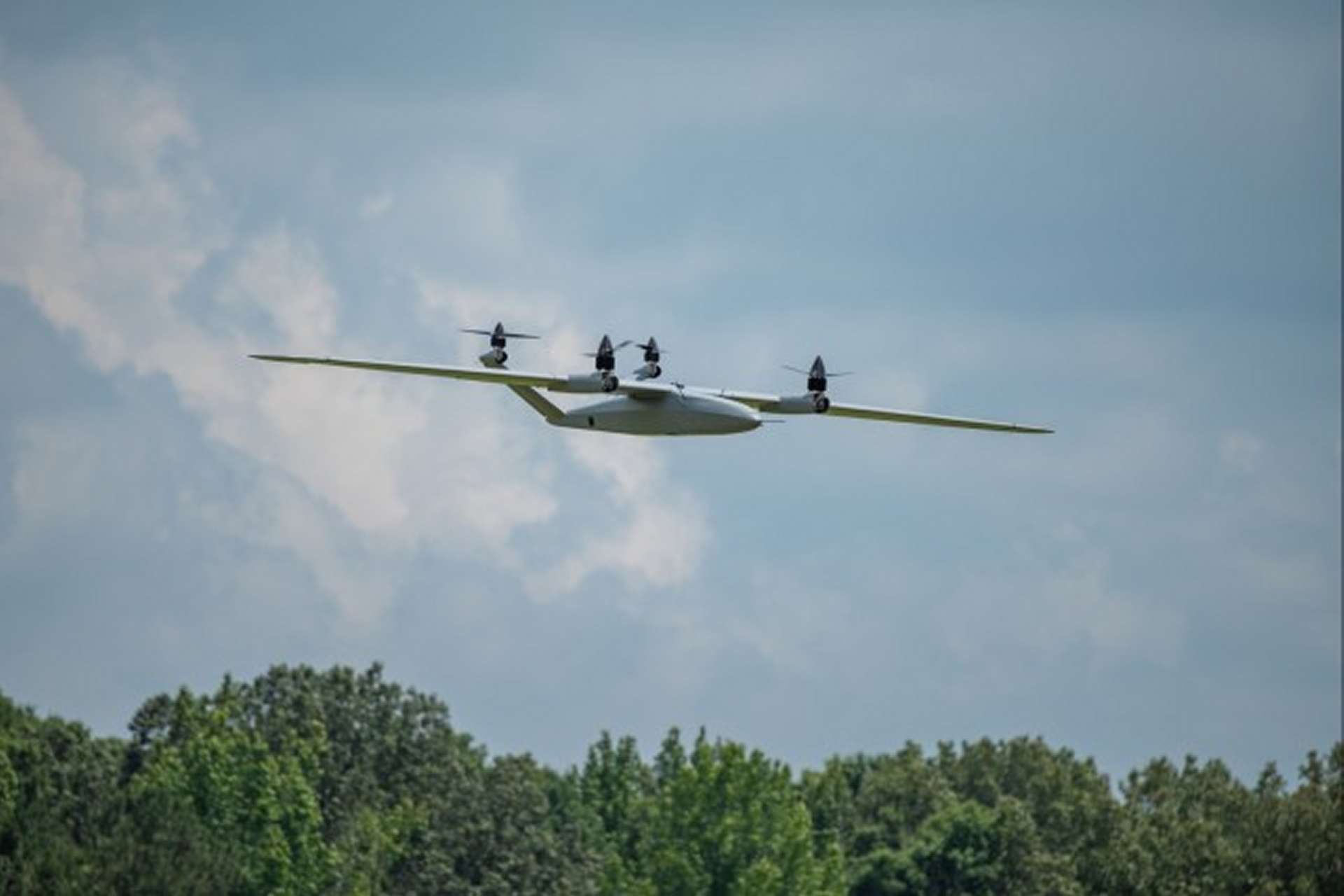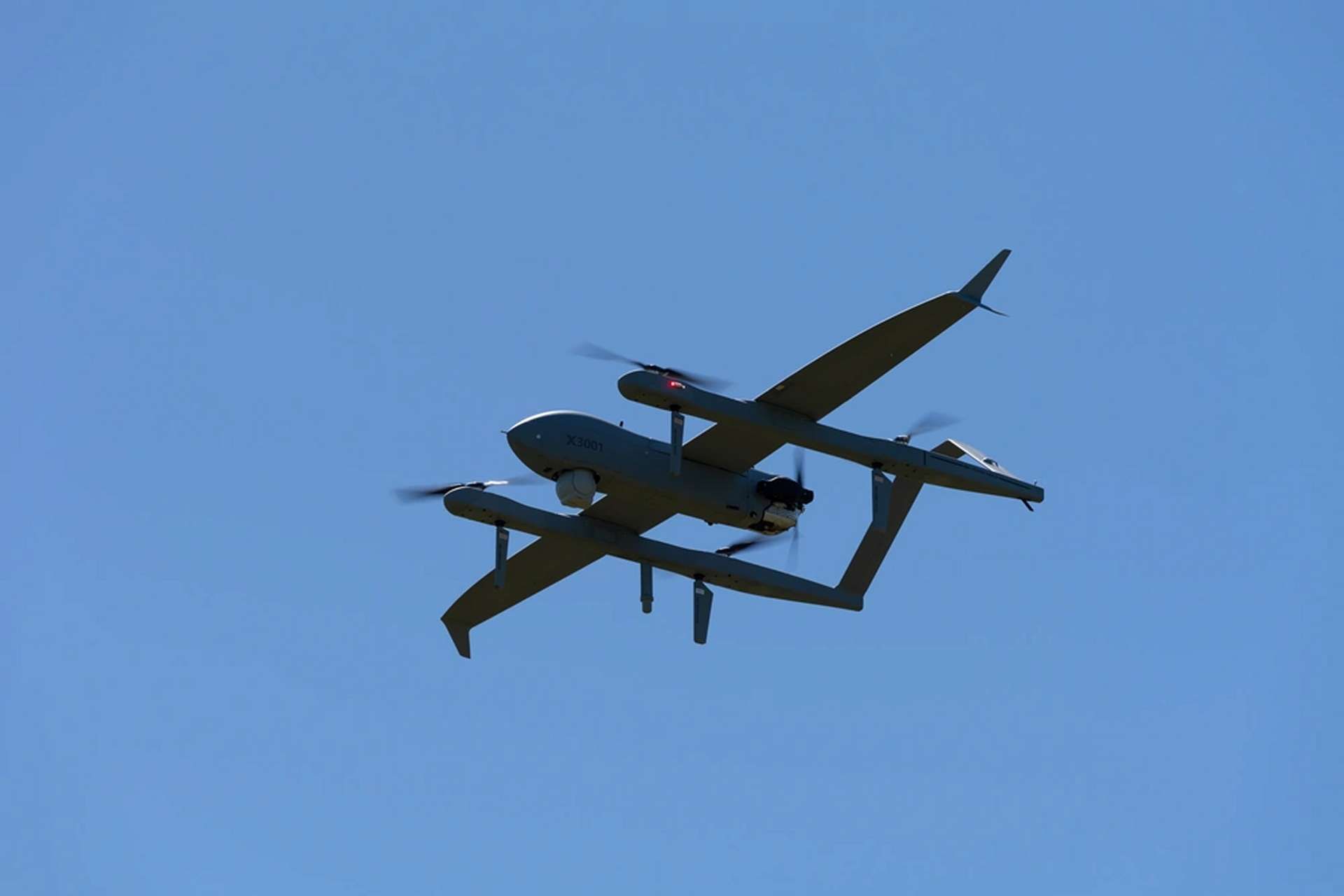Breaking News
US Army's FTUAS Program Tests Drone System Interoperability with Textron Aerosonde 4.8 HQ and Griffon Aerospace Valiant UAVs.
On September 10, 2024, the U.S. Army achieved two significant milestones in the development of its Future Tactical Unmanned Aircraft System (FTUAS) program, with the completion of the Modular Open Systems Approach (MOSA) compliance evaluations and flight demonstrations of competing prototypes.
Follow Army Recognition on Google News at this link

Griffon Aerospace Valiant Drone (Picture source: Griffon Aerospace)
The MOSA compliance evaluations were conducted in May and involved companies Griffon Aerospace in Madison, Alabama, and Textron Systems in Huntsville, Alabama. These evaluations were collaborative and involved replacing the mission computers of the vendor prototypes with a third-party surrogate mission computer using a mix of third-party and vendor software. This hardware and software swap allowed an independent evaluator to measure the openness and modularity of the prototype systems to determine the extent to which they meet MOSA objectives. This MOSA compliance verification demonstrated early implementation and alignment with required MOSA functional boundaries and will serve as a model for future evaluations.
The Modular Open Systems Approach (MOSA) is a key initiative of the U.S. Army to enhance the interoperability and flexibility of its systems, particularly in unmanned aircraft system programs like the FTUAS. This strategic framework allows for seamless integration between various technological components, facilitating cooperation between different equipment and platforms. Thanks to MOSA's modular design, systems can easily integrate new technologies or update specific components, which promotes scalability without necessitating a complete overhaul.
MOSA also helps reduce development costs and time by decreasing dependence on single suppliers and fostering healthy competition among them, which stimulates innovation and cost reduction. Aligning with open industrial standards also leverages technological advances from the civilian sector, thus enhancing the relevance and efficiency of military systems. Additionally, MOSA's modularity simplifies system maintenance, allowing for updates or replacements of individual components, which ensures increased operational availability and extends the equipment's lifespan.
After the MOSA verifications, the FTUAS team conducted flight demonstrations with the prototypes from both suppliers at the Redstone Test Center (RTC), a subordinate command of the U.S. Army Test and Evaluation Command. Griffon Aerospace and Textron Systems performed multiple flights at RTC, demonstrating key system features such as Vertical Takeoff and Landing (VTOL), reduced acoustic signature, On-The-Move (OTM) command and control, rapid deployment, system integration, and flight performance. Each supplier will continue prototype development, incorporate feedback and lessons learned, and deliver production representative prototypes for future government-led testing at RTC, which will ultimately inform the Army's selection for a Tactical Unmanned Aircraft System program.
The FTUAS will provide Brigade Combat Teams (BCT) with an organic capability to conduct reconnaissance and surveillance operations that collect, develop, and report actionable intelligence, allowing the BCT commander to maintain dominance during Multi-Domain Operations.
FTUAS's transformational capabilities include VTOL for runway independence, OTM command and control, and soldier-led, field-level maintenance. The Modular Open Systems Approach of the FTUAS allows the system to keep pace with technology through rapid capability insertions.
The Program Executive Office (PEO) for Aviation at Redstone Arsenal, Alabama, is responsible for modernizing the Army Aviation fleet of manned and unmanned aircraft to maintain the Army's asymmetric advantage over peer adversaries in large-scale combat operations. The Unmanned Aircraft Systems Project Office of PEO Aviation is dedicated to rapidly fielding transformational UAS capabilities at all echelons of Army formations.
Griffon Aerospace Valiant
The Griffon Aerospace Valiant, a Category 3 Vertical Takeoff and Landing (VTOL) platform, represents a significant evolution in tactical unmanned aerial systems (UAS) designed for the U.S. Army's Future Tactical Uncrewed Aircraft System (FTUAS) program. This drone is designed to offer unmatched endurance and payload capacity, meeting the demanding requirements of multi-domain operations and contested logistics scenarios. The Valiant integrates a Modular Open System Approach (MOSA), which enables the integration of interchangeable payloads and facilitates rapid capability insertions, enhancing flexibility and interoperability across various military technologies.
Key features of the Valiant include its capabilities for command and control on the move, which provide robust communication links and operational control even while mobile. This feature is particularly vital for operations in environments where traditional communication infrastructures are compromised or absent. The drone's heavy fuel engine minimizes the logistical footprint, allowing for extended operations without the need for frequent refueling or extensive ground support equipment. These capabilities ensure that the Valiant is not only a platform for today but is also future-proofed against evolving battlefield requirements and technological advancements.
Textron Aerosonde 4.8 HQ
The Aerosonde Mk. 4.8 Hybrid Quad (HQ) is an Unmanned Aircraft System (UAS) developed by Textron Systems, optimized to meet the specific needs of the U.S. Army's Future Vertical Lift program. This drone features Hybrid Quadrotor technology, enabling vertical takeoff and landing (VTOL), making it independent of traditional runways. Designed specifically to operate in challenging environments and austere areas, the Aerosonde HQ offers increased flexibility for military missions, thanks to its capability to be rapidly deployed and operated by just two soldiers, thus facilitating its transport by UH-60 helicopters or tactical vehicles.
The system is characterized by a flight endurance of 14 hours and can reach a ceiling of over 15,000 feet above mean sea level, with a payload capacity of 30 pounds. The use of a heavy fuel engine (JP-8) simplifies logistics on the ground and reduces the need for additional support equipment. The Aerosonde Mk. 4.8 HQ is also designed around a Modular Open System Approach (MOSA), which allows for easy integration of new technologies and innovations, while optimizing costs and avoiding unnecessary expenses. This combination of features makes the Aerosonde HQ a robust and adaptable solution for the reconnaissance and surveillance missions required by modern military operations.

Textron Aerosonde 4.8 HQ Drone (Picture source: Textron)


























